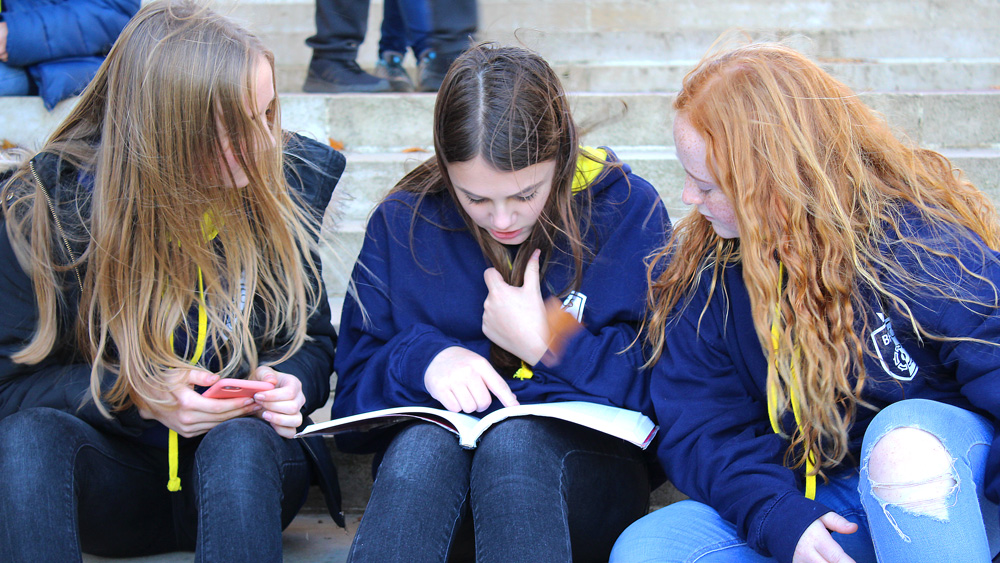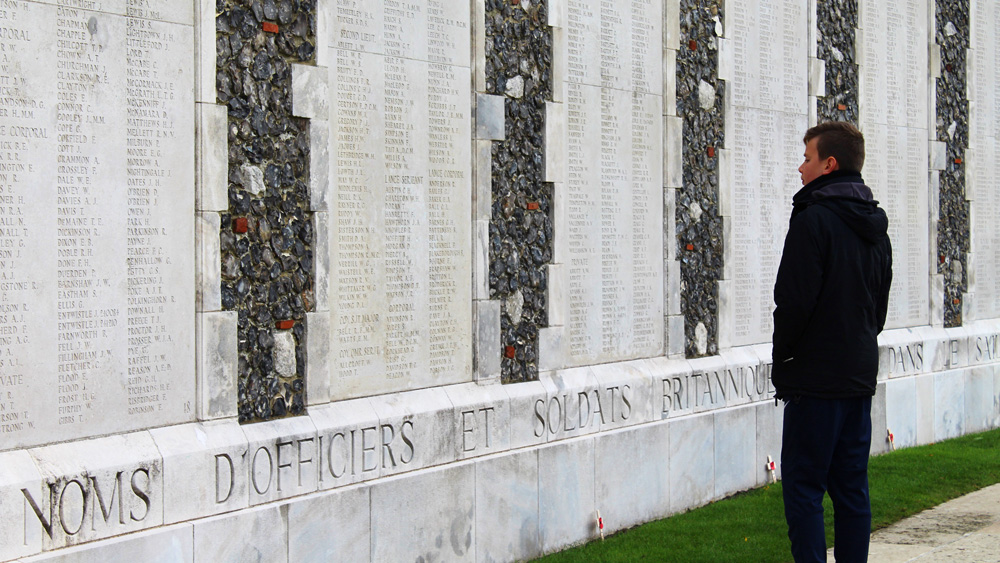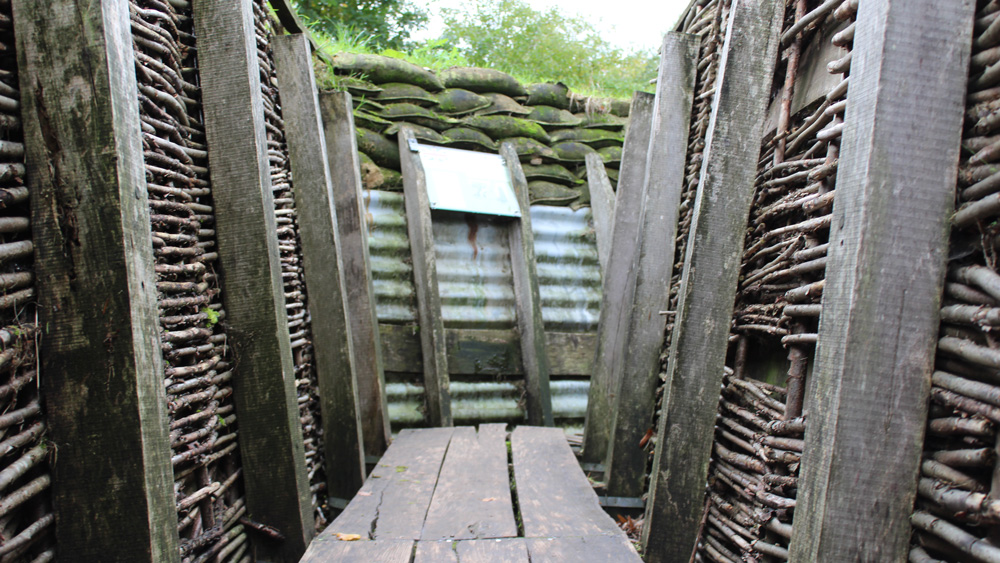
With two coaches full of 80 budding historians and two History Tour Guides in tow, Brighton Hill Community School were all set for their history trip to the battlefields – and I was lucky enough to join them!
No strangers to touring, Brighton Hill were keen to have two History Tour Guides on board for their invaluable, detailed knowledge of the sites. And with just 3 days to see everything, they packed a lot into their itinerary. Take a look at what they got up to…
Day 1:
After a fairly choppy crossing from Dover to Calais, we touched down in France and made our way to our first excursion.
Lijssenthoek Military Cemetery was our first stop. The second largest cemetery from the First World War, it has almost 11,000 graves. Our History Tour Guides Trevor and Richard led the way, taking their groups to specific people that are buried there – including nurse Nellie Spindler, the only woman to be buried there – giving the students an insight into their lives. After a final look in the memorial register books, it was time to move on to our next stop, Essex Farm.
It was at Essex Farm that Colonel John McCrae composed the famous poem ‘In Flanders Fields’. With the rest of the group gathered around, one student read the poem aloud for us all to hear, before we made our way up to the cemetery to hear the history of the youngest boy to lose his life in the war, who was just 15 years old.
Our last stop was Hooge Crater Museum & Trenches. This did not disappoint. All the students gathered in a room eagerly waiting for what our guides were going to do next! Their faces lit up when out of the cupboard came a hoard of WWI equipment; from rifles and gas masks to helmets and grenades. There was time to have a look around the museum packed with WWI , before heading outside to walk through the trenches in WWI attire.
Travelling back into Ypres, it was time to check into our accommodation, The Salient School Hotel, followed by a trip to the Leonidas chocolate shop. The kids (and adults) were in chocolate heaven and managed to get a good haul before heading off for dinner at De Mande Restaurant. With an evening of leisure to follow, it allowed the kids to wind down and play pool or ping pong in the hotel, refuelling for day two.
Day 2:
With a good breakfast in our bellies and a packed lunch in hand, we set off for Vimy Ridge. As the memorial site for the Canadian Corps, we were lucky enough to get a guided tour of the tunnels by the Canadian guides themselves, who are chosen to come over and represent their country
Next stop was Beaumont-Hamel Newfoundland Park, where we were honoured to have another guided tour from their Canadian guides. In the shadow of the proud caribou at the top of the mound, we discovered trenches, memorials and cemeteries.
We hopped back on the coach and made our way to Lochnagar Crater. Walking around the edge of the crater, the students were in awe of the size of it. Afterwards it was Thiepval Memorial. As the site of the Memorial to the Missing, Thiepval Memorial dwarfs anything stood next to it, which makes it truly incredible to see.
One of the students had a relative who was on the wall, so to honour him and every other soldier, Trevor and Richard held an impromptu service where the student was able to lay a wreath for his fallen relative. We moved on from the memorial and headed back to Ypres to fuel up with dinner before the Last Post Ceremony at the Menin Gate.
Stationed at the front of one of the four quadrants in the Menin Gate, the students had the best spot to watch on as two of their fellow students had the honour of laying a wreath at this moving ceremony. With not a dry eye in the house, the students made their way back to the hotel for an evening of leisure ahead of our last day in Belgium.
Day 3:
After our final breakfast we started our journey home – but not without a few stops along the way! Our first stop was an impromptu one at a Canadian memorial to discuss the usage of gas in the war and how this developed over time.
We then moved on to Langemark Cemetery to see the difference between the German cemetery and the commonwealth cemeteries. Next, we headed to the largest British cemetery on the Western Front, Tyne Cot. The size of it was a lot to take in, but after a walk around and a final look in the memorial register books, it was time to head to our last excursion.
Passchendaele Memorial Museum is a Belgian museum devoted to the 1917 Battle of Passchendaele. The museum was perfectly set up, seamlessly moving from one room to another, down to the tunnels below and then outside into the trenches – not to forget the gift shop at the end.
As our time at the museum drew to an end, it was time to start our journey home. Making for Calais and having a slightly less choppy ferry ride home, we could see the White Cliffs of Dover welcoming us home. We may have been leaving Belgium behind, but we were definitely taking some incredible memories with us.
Read our recent blog: So much more than just a History Guide…















